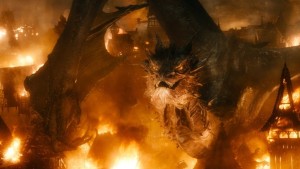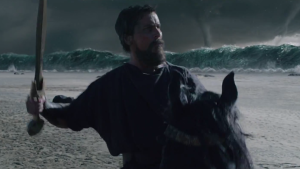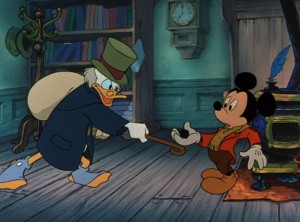I can see why Peter Jackson wanted to make “The Hobbit” into three movies instead of two. Besides making 50 percent more money, much more character development happens and the story feels more complete—a beginning, a middle and an end.
But it didn’t need to be three movies. It didn’t even need to be two. Nevertheless, we got a third Hobbit movie anyway, and for the most part it was not bad.
“The Hobbit: The Battle of the Five Armies” is the third installment of the Hobbit movie franchise and sixth Middle Earth movie co-written and directed by Peter Jackson. Beginning almost immediately where the previous film left off, the vengeful dragon Smaug is destroying the peaceful hamlet of Laketown as Bilbo (Martin Freeman) and the dwarves lay claim to the Lonely Mountain.
But their celebration is short-lived as Thorin (Richard Armitage) grows obsessed with finding the Arkenstone and keeping all the treasure inside for himself and his relatives. Meanwhile, Gandalf (Ian McKellen) is rescued by his elven and wizard friends where an unexpected emergence of Sauron, the main antagonist of “The Lord of the Rings,” occurs.
Unfortunately for all involved the struggle has only just begun, because armies of dwarves, elves, orcs, humans and goblins converge at the base of the Lonely Mountain, all with a plan to take the treasure inside. The fight for the future of Middle Earth has only just begun.
First of all, Martin Freeman is Bilbo Baggins. No other actor has captured the character or what a hobbit is supposed to be except for Freeman, though Ian Holm came close. Freeman’s acting wasn’t underwhelming or over-the-top, but spot on. The subtlety and sincerity in every move he made and word he said showed a deep and vulnerable man—or hobbit—that makes these movies worth it.
However, when a movie by the same people who made “The Lord of the Rings” looks like it’s trying too hard to look like “The Lord of the Rings,” something is wrong. It may be the 48 frames per second, it may be the new cameras and 3D or it may just be the special effects crew, but sometimes this movie looked more fake than Fellowship of the Ring did 13 years ago.
The actual battle with the five armies tries to be as big and exciting as the battle in Return of the King, but it just looked like a bunch of CGI and green screen in 3D. Even the soundtrack sounded more like a parody of the Lord of the Rings scores than a serious score for The Hobbit.
The story, for the most part, is okay. Everything that was actually in the novel, or was very much in the spirit of the novel, worked wonderfully. But everything that came from the appendixes or other Middle Earth books and was shoe horned into these movies was distracting and wasteful…except for Sylvester McCoy as the wizard Radagast. He was fun.
Ian McKellen was great as Gandalf, which should be no surprise to anyone. All the actors who portrayed the dwarves, elves, Laketown men and orcs were just fine. I’m surprised that in three movies clocking in at eight hours total, I didn’t really care about what happened to any one of the supporting characters. Honestly, their stories weren’t very interesting and their motivations not very impressive. So for what script they had, everyone was good.
What we needed was more Bilbo. If we were given two three-hour movies with every scene that had no direct connection to Bilbo cut out, the movies would have been better. It is called “The Hobbit,” after all. Shouldn’t Bilbo be the central hero with the story surrounding him? He is the narrator and “writer” of the book in Lord of the Rings. He wouldn’t have known what was going on in nearly 30 percent of what we saw in this trilogy.
At least there were some short scenes with British and Australian greats like Hugo Weaving, Christopher Lee, Cate Blanchett and Benedict Cumberbatch as the voice of Smaug. The first three are extremely important in the Lord of the Rings films, so seeing them encounter Sauron does give an insight into their character in the later stories/earlier films. And Cumberbatch is a great actor voicing Smaug, an equally great villain.
If you’re a fan of J.R.R. Tolkien’s books, then you will like some parts of this movie. If you like fantasy and action/adventure, you will like some parts of this movie. In the end, it’s the final Middle Earth installment that could have been so much better, but without Peter Jackson in charge it could have been so much worse as well.








